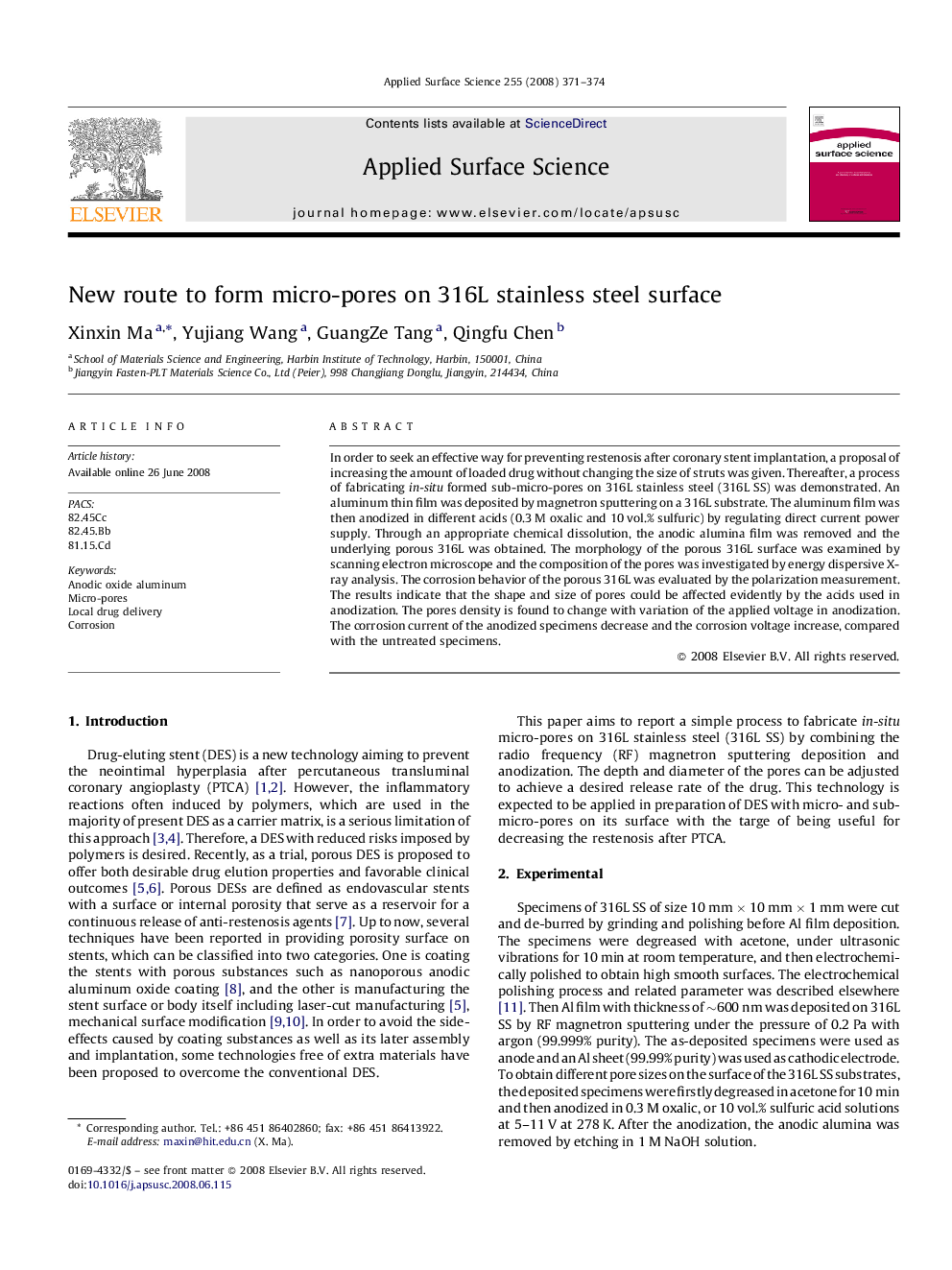| Article ID | Journal | Published Year | Pages | File Type |
|---|---|---|---|---|
| 5365079 | Applied Surface Science | 2008 | 4 Pages |
Abstract
In order to seek an effective way for preventing restenosis after coronary stent implantation, a proposal of increasing the amount of loaded drug without changing the size of struts was given. Thereafter, a process of fabricating in-situ formed sub-micro-pores on 316L stainless steel (316L SS) was demonstrated. An aluminum thin film was deposited by magnetron sputtering on a 316L substrate. The aluminum film was then anodized in different acids (0.3Â M oxalic and 10Â vol.% sulfuric) by regulating direct current power supply. Through an appropriate chemical dissolution, the anodic alumina film was removed and the underlying porous 316L was obtained. The morphology of the porous 316L surface was examined by scanning electron microscope and the composition of the pores was investigated by energy dispersive X-ray analysis. The corrosion behavior of the porous 316L was evaluated by the polarization measurement. The results indicate that the shape and size of pores could be affected evidently by the acids used in anodization. The pores density is found to change with variation of the applied voltage in anodization. The corrosion current of the anodized specimens decrease and the corrosion voltage increase, compared with the untreated specimens.
Related Topics
Physical Sciences and Engineering
Chemistry
Physical and Theoretical Chemistry
Authors
Xinxin Ma, Yujiang Wang, GuangZe Tang, Qingfu Chen,
